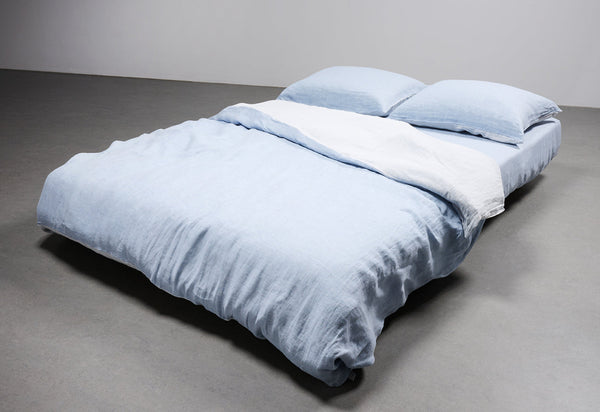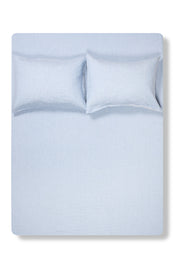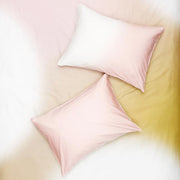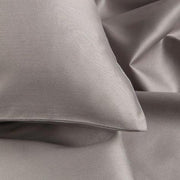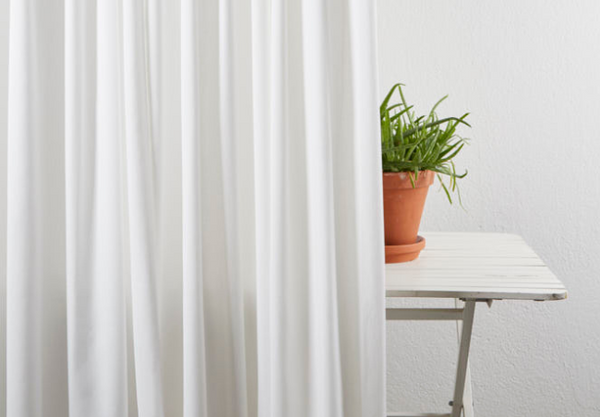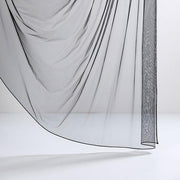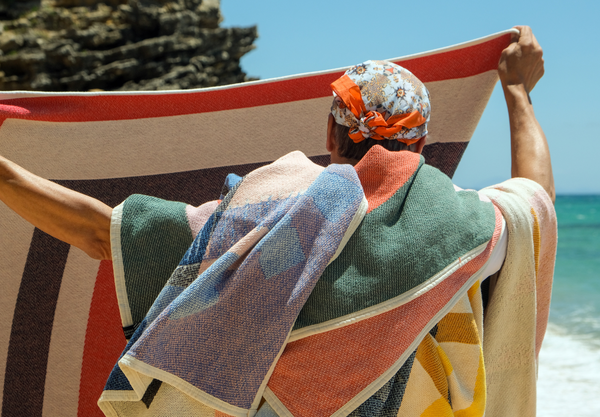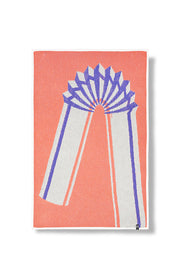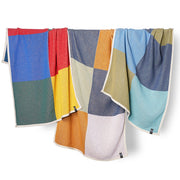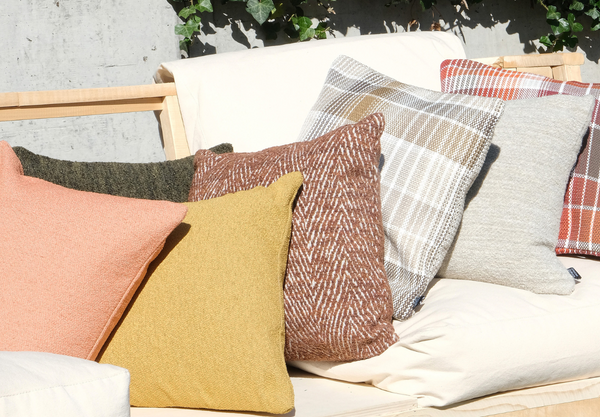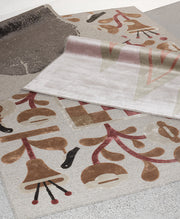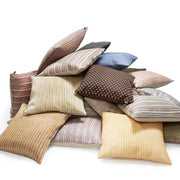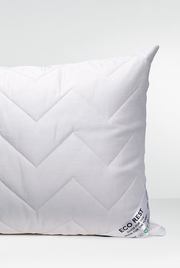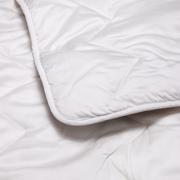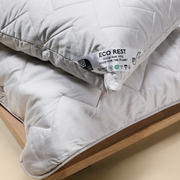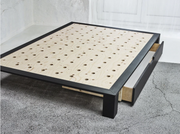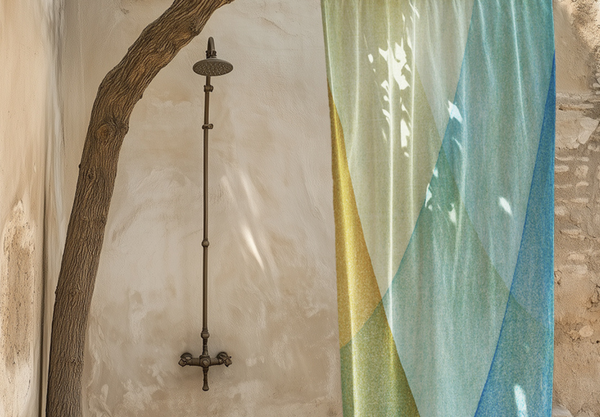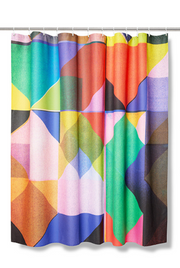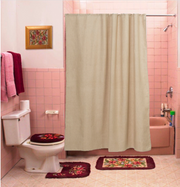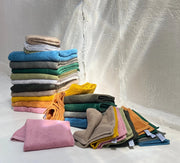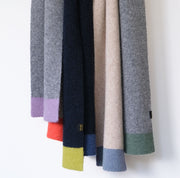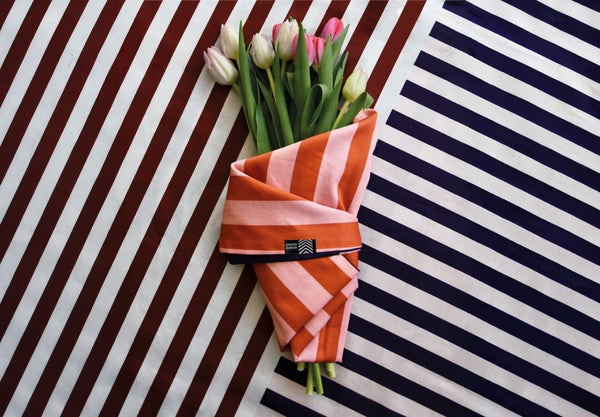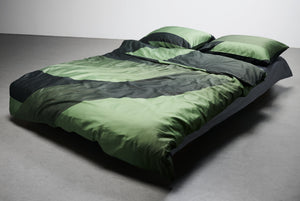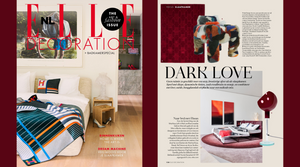Choosing a shower curtain seems simple enough. You pick a design you like, hang it up, and you’re done. But the reality is often a droopy, drafty curtain that lets water escape, a material that feels flimsy, or the slow creep of mildew that turns a beautiful bathroom into a constant cleaning project.
They are the result of common, avoidable mistakes that can undermine the look and overall feel of your entire bathroom. The good news is that a little guidance goes a long way. This guide will walk you through the most frequent blunders so you can choose a shower curtain with confidence.
Mistake 1: Guessing the Dimensions
The most common pitfall is incorrect sizing. A curtain that’s too short looks awkward and might let the water splash on the floor. One that’s too long sits on the floor, creating the perfect environment for mildew. A curtain that isn't wide enough will stretch in use, failing to protect your floor from the splashes.
Standard dimensions like 180cm x 180cm (72" x 72") usually work well for many bathtubs, but what about walk-in showers, clawfoot tubs, or custom stalls?
How to Solve: Please Measure Your Curtains with Precision
Before you start shopping, grab a tape measure and check the curtain sizes you need.
1. Width: Measure the full length of your shower rod. Add about 30cm (12 inches) to this measurement. This extra fabric allows the curtain to hang in soft, natural folds, providing better coverage without being stretched.
2. Length: Measure from the bottom of the shower rod to the floor. For a standard tub, subtract about 20-25cm (8-10 inches) so the curtain hangs well below the tub lip but doesn't touch the floor. For a walk-in shower, you typically want the curtain to hover just 2-5cm (1-2 inches) from the floor.
Mistake 2: Choosing the Wrong Material
Your shower curtain’s material affects everything from its appearance and durability to your health and the environment. Some material may look fine at first, but it can come with something you wouldn't like in your bathroom. Such as plastic or vinyl liners, they might seem like an easy choice, but their strong chemical smell can quickly take over a small, steamy bathroom.
On the other hand, a standard, untreated cotton curtain might look luxurious initially, but it can quickly become a mildew magnet. It absorbs moisture, stays damp for hours, and requires constant washing to keep mold at bay. Polyester is a common middle ground, but it can lack the texture and weight of natural fabrics.
How to Solve: Prioritize Function and Feel
When comparing materials, consider water repellency, durability, and maintenance.
| Material | Pro | Cons |
| Vinyl/PVC | Waterproof, budget-friendly | May release a chemical smell, less durable over time |
| Polyester | Water-resistant, durable, affordable | Not as breathable as natural fabrics |
| Untreated Cotton/Linen | Soft, luxurious feel, beautiful drape | Highly absorbent, prone to mold/mildew, requires a liner |
| Teflon EcoElite™ Treated Cotton | Luxurious feel, highly water repellent, quick drying, mold resistant, non-toxic | A little more investment than basic options |
Our solution was to combine the best of both worlds. We use high-quality cotton treated with Teflon EcoElite™, a non-toxic, plant-based finish that makes the fabric exceptionally water repellent. An example of this is the Panama cotton shower that uses Teflon EcoElite™.
Mistake 3: Overlooking Long-Term Care
A shower curtain goes through a lot. It faces daily onslaughts of steam, water, and soap. Yet, most of us only think about cleaning it when we see visible green on it. Neglecting proper care is the fastest way to shorten your curtain's life and turn it into a breeding ground for bacteria.
One of the most debated topics is whether to leave the curtain open or closed after a shower. The answer is simple: spread it out. Closing your curtain traps moisture in the folds, which is exactly what mold and mildew need to stay alive.
How to Solve: Create a Simple Maintenance Routine
1. Ventilation is Important: Open your window or run your bathroom fan during and for at least 15 minutes after a shower to help moisture dissipate.
2. Spread it Out: After each use, pull the curtain fully closed along the rod. This allows air to circulate evenly and helps your curtain dry much faster.
3. Wash Regularly: Fabric curtains, including our treated cotton ones, should be washed periodically. Following the specific washing and maintenance tips for your curtain’s material will keep it fresh and extend its life significantly.
Mistake 4: Ignoring the Liner
Do you need a shower curtain liner? The answer depends entirely on your curtain's material. Using an untreated cotton or linen curtain without a waterproof liner is waiting for them to get invaded by mildew. On the other hand, some high-performance curtains are designed to work perfectly well on their own.
How to Solve: Understand Your Curtain's Needs
If you love the decorative curtain made from a natural, absorbent fabric, you absolutely need a liner. Look for one that is mold-resistant and fits correctly with your curtain.
However, a better approach is often to choose a curtain that doesn’t require a liner at all. Such as our Teflon EcoElite™ treated cotton curtains that are designed to be used without a liner. They provide all the water repellency needed, simplifying your setup and eliminating that extra layer of plastic.
Mistake 5: Neglecting Installation and Hardware
How you install your curtain can make or break your setup. If you hang a heavy, good-quality curtain on a weak tension rod, it can bend or even fall. Rings that don’t slide smoothly will make opening and closing the curtain frustrating. And if the rod is placed too high or too low, the whole look of the bathroom can feel off.
How to Solve: Invest in a Solid Foundation
1. Rod Placement: As a general rule, mount your shower rod about 7.5–12.5 cm (3–5 inches) above the top of the curtain. This pairs with the measurements in Mistake 1 to give you the right fit and a more open look.
2. Rod Choice: For heavier fabric curtains, a securely mounted screw in rod is always superior to a tension rod.
3. Ring Selection: Choose rings or hooks with a smooth gliding mechanism to protect your curtain and ensure easy movement.
Choose The Right Curtain for the Right Space
A shower curtain is more than just a bathroom accessory. It’s a piece that shapes your space, greets you every day, and reflects your personality. By steering clear of the five common mistakes we’ve covered, you set yourself up for a curtain that looks better, lasts longer, and works the way it should.
Choose one that’s made to fit perfectly, crafted to last, and designed to inspire. Explore our artist-designed collection and find the shower curtain that gets it right from the start.
Frequently Asked Questions
1. Is cotton really a good material for a shower curtain?
Standard cotton is not ideal because it absorbs water. However, our specially treated cotton is different. The Teflon EcoElite™ finish makes it highly water repellent and quick drying, offering the beauty of a natural fabric with the performance you need in a wet environment.
2. Can I really use ZigZagZurich curtains without a plastic liner?
Yes. Our Teflon EcoElite™ cotton shower curtains are treated to repel water effectively, so no liner is required. This creates a more elegant, minimalist look and avoids the use of plastics like PVC or vinyl.
3. How do I prevent mold on a fabric shower curtain?
The best defense is a curtain that resists moisture in the first place. Our quick-dry, treated cotton is your first line of defense. Combine that with two simple habits: run your exhaust fan and spread the curtain out fully to dry after each shower.
